73 papers:
 DocEng-2015-MeiKYRIMM #performance #word
DocEng-2015-MeiKYRIMM #performance #word- Efficient Computation of Co-occurrence Based Word Relatedness (JM, XK, ZY, ARC, AI, AM, EEM), pp. 43–46.
 SCSM-2015-PervinPDTT #hashtag #multi #twitter
SCSM-2015-PervinPDTT #hashtag #multi #twitter- Hashtag Popularity on Twitter: Analyzing Co-occurrence of Multiple Hashtags (NP, TQP, AD, HT, FT), pp. 169–182.
 DUXU-TMT-2014-Renner #image
DUXU-TMT-2014-Renner #image- Ornamental Images and Their Digital Occurrences (MR), pp. 663–674.
 HCI-AIMT-2014-TawatsujiMM #reasoning #towards
HCI-AIMT-2014-TawatsujiMM #reasoning #towards- Proposal for the Model of Occurrence of Negative Response toward Humanlike Agent Based on Brain Function by Qualitative Reasoning (YT, KM, TM), pp. 768–778.
 ICPR-2014-KhanMMT #image
ICPR-2014-KhanMMT #image- Emergent Properties from Feature Co-occurrence in Image Collections (UMK, SM, BM, AT), pp. 2347–2352.
 ICPR-2014-LiuXYZ #analysis
ICPR-2014-LiuXYZ #analysis- Texture Analysis with Shape Co-occurrence Patterns (GL, GSX, WY, LZ), pp. 1627–1632.
 ICPR-2014-RaghavendraRYB #assessment #automation #empirical #matrix #quality #using #video
ICPR-2014-RaghavendraRYB #assessment #automation #empirical #matrix #quality #using #video- Automatic Face Quality Assessment from Video Using Gray Level Co-occurrence Matrix: An Empirical Study on Automatic Border Control System (RR, KBR, BY, CB), pp. 438–443.
 ICPR-2014-SuLTLT #recognition #using
ICPR-2014-SuLTLT #recognition #using- Character Recognition in Natural Scenes Using Convolutional Co-occurrence HOG (BS, SL, ST, JHL, CLT), pp. 2926–2931.
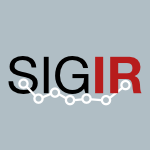 SIGIR-2014-WangZZL #identification #keyword #twitter
SIGIR-2014-WangZZL #identification #keyword #twitter- Efficiently identify local frequent keyword co-occurrence patterns in geo-tagged Twitter stream (XW, YZ, WZ, XL), pp. 1215–1218.
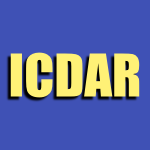 ICDAR-2013-TianLST #recognition #using
ICDAR-2013-TianLST #recognition #using- Scene Text Recognition Using Co-occurrence of Histogram of Oriented Gradients (ST, SL, BS, CLT), pp. 912–916.
 CIKM-2013-CaiZZW
CIKM-2013-CaiZZW- Wikification via link co-occurrence (ZC, KZ, KQZ, HW), pp. 1087–1096.
 CIKM-2012-CamposDJN #approach #higher-order #identification #named #web
CIKM-2012-CamposDJN #approach #higher-order #identification #named #web- GTE: a distributional second-order co-occurrence approach to improve the identification of top relevant dates in web snippets (RC, GD, AJ, CN), pp. 2035–2039.
 CIKM-2012-DybalaRAS #analysis #comparative #generative #ranking
CIKM-2012-DybalaRAS #analysis #comparative #generative #ranking- Data filtering in humor generation: comparative analysis of hit rate and co-occurrence rankings as a method to choose usable pun candidates (PD, RR, KA, KS), pp. 2587–2590.
 ICPR-2012-FengB #concept #detection #image #semantics
ICPR-2012-FengB #concept #detection #image #semantics- Utilizing co-occurrence patterns for semantic concept detection in images (LF, BB), pp. 2918–2921.
 ICPR-2012-MatsudaY #multi #ranking #recognition
ICPR-2012-MatsudaY #multi #ranking #recognition- Multiple-food recognition considering co-occurrence employing manifold ranking (YM, KY), pp. 2017–2020.
 KDIR-2012-QuirogaMH #sequence
KDIR-2012-QuirogaMH #sequence- Frequent and Significant Episodes in Sequences of Events — Computation of a New Frequency Measure based on Individual Occurrences of the Events (OQ, JM, SH), pp. 324–328.
 SIGIR-2012-LuCL #information retrieval
SIGIR-2012-LuCL #information retrieval- Fixed versus dynamic co-occurrence windows in TextRank term weights for information retrieval (WL, QC, CL), pp. 1079–1080.
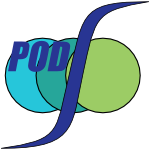 PODS-2011-OrlandiV #estimation #string
PODS-2011-OrlandiV #estimation #string- Space-efficient substring occurrence estimation (AO, RV), pp. 95–106.
 ICFP-2011-AhnS #combinator #data type #induction #recursion
ICFP-2011-AhnS #combinator #data type #induction #recursion- A hierarchy of mendler style recursion combinators: taming inductive datatypes with negative occurrences (KYA, TS), pp. 234–246.
 CIKM-2011-FontouraGJV #encoding
CIKM-2011-FontouraGJV #encoding- Efficiently encoding term co-occurrences in inverted indexes (MF, MG, VJ, SV), pp. 307–316.
 KDIR-2011-RoleN #case study #metric #similarity #word
KDIR-2011-RoleN #case study #metric #similarity #word- Handling the Impact of Low Frequency Events on Co-occurrence based Measures of Word Similarity — A Case Study of Pointwise Mutual Information (FR, MN), pp. 226–231.
 SIGIR-2011-PaikPP #algorithm #novel #statistics #using
SIGIR-2011-PaikPP #algorithm #novel #statistics #using- A novel corpus-based stemming algorithm using co-occurrence statistics (JHP, DP, SKP), pp. 863–872.
 SAT-2011-KullmannZ #normalisation #on the
SAT-2011-KullmannZ #normalisation #on the- On Variables with Few Occurrences in Conjunctive Normal Forms (OK, XZ), pp. 33–46.
 DocEng-2010-CutterBSB #re-engineering
DocEng-2010-CutterBSB #re-engineering- Unsupervised font reconstruction based on token co-occurrence (MPC, JvB, FS, TMB), pp. 143–150.
 DLT-J-2008-CrochemoreFIJ10 #string
DLT-J-2008-CrochemoreFIJ10 #string- Number of Occurrences of powers in Strings (MC, SZF, CSI, IJ), pp. 535–547.
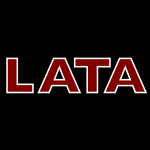 LATA-2010-CarrascosaCGL #problem #word
LATA-2010-CarrascosaCGL #problem #word- Choosing Word Occurrences for the Smallest Grammar Problem (RC, FC, MG, GGIL), pp. 154–165.
 CIKM-2010-BelemMAGP #metric #quality #recommendation #web
CIKM-2010-BelemMAGP #metric #quality #recommendation #web- Exploiting co-occurrence and information quality metrics to recommend tags in web 2.0 applications (FMB, EFM, JMdA, MAG, GLP), pp. 1793–1796.
 CIKM-2010-MadaniY #analysis #topic
CIKM-2010-MadaniY #analysis #topic- Discovery of numerous specific topics via term co-occurrence analysis (OM, JY), pp. 1841–1844.
 ICPR-2010-Hotta #classification #using #visual notation #word
ICPR-2010-Hotta #classification #using #visual notation #word- Scene Classification Using Local Co-occurrence Feature in Subspace Obtained by KPCA of Local Blob Visual Words (KH), pp. 4230–4233.
 ICPR-2010-KobayashiO10a #classification #image
ICPR-2010-KobayashiO10a #classification #image- Bag of Hierarchical Co-occurrence Features for Image Classification (TK, NO), pp. 3882–3885.
 ICPR-2010-PutpuekCLS #approach #detection #identification
ICPR-2010-PutpuekCLS #approach #detection #identification- Unified Approach to Detection and Identification of Commercial Films by Temporal Occurrence Pattern (NP, NC, CL, SS), pp. 3288–3291.
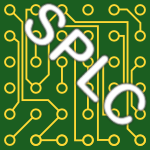 SPLC-2010-Duszynski #diagrams #matrix #variability #visualisation
SPLC-2010-Duszynski #diagrams #matrix #variability #visualisation- Visualizing and Analyzing Software Variability with Bar Diagrams and Occurrence Matrices (SD), pp. 481–485.
 ICST-2010-NagahawatteD #effectiveness #fault #testing
ICST-2010-NagahawatteD #effectiveness #fault #testing- The Effectiveness of Regression Testing Techniques in Reducing the Occurrence of Residual Defects (PN, HD), pp. 79–88.
 SAT-2010-MatthewsP #satisfiability
SAT-2010-MatthewsP #satisfiability- Uniquely Satisfiable k-SAT Instances with Almost Minimal Occurrences of Each Variable (WM, RP), pp. 369–374.
 LATA-2009-LiefoogheTV #algorithm #self
LATA-2009-LiefoogheTV #algorithm #self- Self-overlapping Occurrences and Knuth-Morris-Pratt Algorithm for Weighted Matching (AL, HT, JSV), pp. 481–492.
 OCSC-2009-ChaLHK #evaluation #using
OCSC-2009-ChaLHK #evaluation #using- User Reputation Evaluation Using Co-occurrence Feature and Collective Intelligence (JWC, HwL, YSH, LK), pp. 305–311.
 ICEIS-ISAS-2009-LauITR #analysis #modelling #process
ICEIS-ISAS-2009-LauITR #analysis #modelling #process- Discovery and Analysis of Activity Pattern Co-occurrences in Business Process Models (JML, CI, LHT, MR), pp. 83–88.
 CIKM-2009-JinYW #classification #graph
CIKM-2009-JinYW #classification #graph- Graph classification based on pattern co-occurrence (NJ, CY, WW), pp. 573–582.
 SAT-2009-JohannsenRW #satisfiability #strict
SAT-2009-JohannsenRW #satisfiability #strict- Solving SAT for CNF Formulas with a One-Sided Restriction on Variable Occurrences (DJ, IR, MW), pp. 80–85.
 ICEIS-AIDSS-2008-BoucheGC #sequence
ICEIS-AIDSS-2008-BoucheGC #sequence- A Global Model of Sequences of Discrete Event Class Occurrences (PB, MLG, JC), pp. 173–180.
 ICEIS-AIDSS-2008-GocB #sequence
ICEIS-AIDSS-2008-GocB #sequence- Discovering Expert’s Knowledge from Sequences of Discrete Event Class Occurrences (MLG, NB), pp. 253–260.
 ICEIS-AIDSS-2008-SharpanskykhSB #analysis #modelling #safety
ICEIS-AIDSS-2008-SharpanskykhSB #analysis #modelling #safety- Organizational Modeling and Analysis of Safety Occurrence Reporting in Air Traffic (AS, SHS, HAPB), pp. 225–230.
 CIKM-2008-ItoNHN #analysis #wiki
CIKM-2008-ItoNHN #analysis #wiki- Association thesaurus construction methods based on link co-occurrence analysis for wikipedia (MI, KN, TH, SN), pp. 817–826.
 ICPR-2008-CheongL #approach #image #matrix #multi #orthogonal #recognition #using
ICPR-2008-CheongL #approach #image #matrix #multi #orthogonal #recognition #using- An approach to texture-based image recognition by deconstructing multispectral co-occurrence matrices using Tchebichef orthogonal polynomials (MCYC, KSL), pp. 1–4.
 ICPR-2008-MuraiF #bound #detection #using #video
ICPR-2008-MuraiF #bound #detection #using #video- Shot boundary detection using co-occurrence of global motion in video stream (YM, HF), pp. 1–4.
 ICDAR-2007-KoklaPK #analysis #image
ICDAR-2007-KoklaPK #analysis #image- Ink Discrimination Based on Co-occurrence Analysis of Visible and Infrared Images (VK, AP, VK), pp. 1148–1152.
 LATA-2007-BaturoR #standard #word
LATA-2007-BaturoR #standard #word- Occurrence and Lexicographic Properties of Standard Sturmian Words (PB, WR), pp. 79–90.
 CIKM-2006-MichelBNTWZ #keyword
CIKM-2006-MichelBNTWZ #keyword- Discovering and exploiting keyword and attribute-value co-occurrences to improve P2P routing indices (SM, MB, NN, PT, GW, CZ), pp. 172–181.
 ICPR-v2-2006-ArivazhaganGK #classification #statistics #using
ICPR-v2-2006-ArivazhaganGK #classification #statistics #using- Texture classification using Curvelet Statistical and Co-occurrence Features (SA, LG, TGSK), pp. 938–941.
 ICPR-v3-2006-UshizakiOD #sequence #video
ICPR-v3-2006-UshizakiOD #sequence #video- Video Synchronization Based on Co-occurrence of Appearance Changes in Video Sequences (MU, TO, KD), pp. 71–74.
 ICDAR-2005-LiSC #analysis #matrix #multi
ICDAR-2005-LiSC #analysis #matrix #multi- A Threshlod Selection Method Based on Multiscale and Graylevel Co-occurrence Matrix Analysis (YL, CYS, MC), pp. 575–579.
 RE-2005-WassonSLK #fault #requirements #using
RE-2005-WassonSLK #fault #requirements #using- Using Occurrence Properties of Defect Report Data to Improve Requirements (KSW, KNS, RRL, JCK), pp. 253–262.
 ICLP-2005-SneyersSD #continuation #optimisation
ICLP-2005-SneyersSD #continuation #optimisation- Guard and Continuation Optimization for Occurrence Representations of CHR (JS, TS, BD), pp. 83–97.
 SAT-2005-Wahlstrom #performance #satisfiability
SAT-2005-Wahlstrom #performance #satisfiability- Faster Exact Solving of SAT Formulae with a Low Number of Occurrences per Variable (MW), pp. 309–323.
 ICPR-v1-2004-ClausiY #comparison #markov #random #segmentation #using
ICPR-v1-2004-ClausiY #comparison #markov #random #segmentation #using- Texture Segmentation Comparison Using Grey Level Co-Occurrence Probabilities and Markov Random Fields (DAC, BY), pp. 584–587.
 ICPR-v1-2004-Zwiggelaar #automation #matrix #segmentation
ICPR-v1-2004-Zwiggelaar #automation #matrix #segmentation- Texture Based Segmentation: Automatic Selection of Co-Occurrence Matrices (RZ), pp. 588–591.
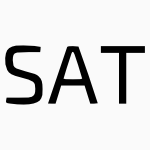 SAT-2004-HooryS #satisfiability
SAT-2004-HooryS #satisfiability- Computing Unsatisfiable k-SAT Instances with Few Occurrences per Variable (SH, SS), pp. 86–95.
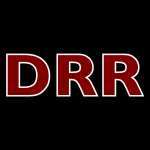 DRR-2003-FaconY #matrix #segmentation
DRR-2003-FaconY #matrix #segmentation- Morphological postal envelope segmentation by co-occurrence matrix (JF, EAY), pp. 294–304.
 DLT-2003-FalcoGL #modelling #probability
DLT-2003-FalcoGL #modelling #probability- Frequency of Symbol Occurrences in Simple Non-primitive Stochastic Models (DdF, MG, VL), pp. 242–253.
 CIKM-2003-AmitayNNSS #ambiguity #multi
CIKM-2003-AmitayNNSS #ambiguity #multi- Multi-resolution disambiguation of term occurrences (EA, RN, WN, RS, AS), pp. 255–262.
 ICML-2003-Mamitsuka #analysis
ICML-2003-Mamitsuka #analysis- Hierarchical Latent Knowledge Analysis for Co-occurrence Data (HM), pp. 504–511.
 ICPR-v3-2002-EI-NasanN #online #recognition
ICPR-v3-2002-EI-NasanN #online #recognition- On-Line Handwriting Recognition Based on Bigram Co-Occurrences (AEN, GN), p. 740–?.
 SIGIR-2002-GaoZNHC #ambiguity #dependence #query #using
SIGIR-2002-GaoZNHC #ambiguity #dependence #query #using- Resolving query translation ambiguity using a decaying co-occurrence model and syntactic dependence relations (JG, MZ, JYN, HH, WC), pp. 183–190.
 SIGIR-2002-LarkeyBC #analysis #information retrieval
SIGIR-2002-LarkeyBC #analysis #information retrieval- Improving stemming for Arabic information retrieval: light stemming and co-occurrence analysis (LSL, LB, MEC), pp. 275–282.
 ICDAR-2001-El-NasanVN #word
ICDAR-2001-El-NasanVN #word- Word Discrimination Based on Bigram Co-Occurrences (AEN, SV, GN), pp. 149–153.
 ICPR-1998-HofmannP #modelling
ICPR-1998-HofmannP #modelling- Mixture models for co-occurrence and histogram data (TH, JP), pp. 192–194.
 KDD-1997-FeldmanAAZK #documentation #keyword #mining
KDD-1997-FeldmanAAZK #documentation #keyword #mining- Maximal Association Rules: A New Tool for Mining for Keyword Co-Occurrences in Document Collections (RF, YA, AA, AZ, WK), pp. 167–170.
 ICPR-1996-BelloK #analysis #using
ICPR-1996-BelloK #analysis #using- Co-occurrence-based texture analysis using irregular tessellations (FB, RIK), pp. 780–784.
 ICPR-1996-Hauta-KasariPJL #analysis #matrix #multi
ICPR-1996-Hauta-KasariPJL #analysis #matrix #multi- Generalized co-occurrence matrix for multispectral texture analysis (MHK, JP, TJ, RL), pp. 785–789.
 KDD-1996-MannilaT #using
KDD-1996-MannilaT #using- Discovering Generalized Episodes Using Minimal Occurrences (HM, HT), pp. 146–151.
 KR-1994-InoueS #on the
KR-1994-InoueS #on the- On Positive Occurrences of Negation as Failure (KI, CS), pp. 293–304.
 ML-1989-Chien #learning
ML-1989-Chien #learning- Learning by Analyzing Fortuitous Occurrences (SAC), pp. 249–251.
 VLDB-1985-FaloutsosC #design #query
VLDB-1985-FaloutsosC #design #query- Design of a Signature File Method that Accounts for Non-Uniform Occurrence and Query Frequencies (CF, SC), pp. 165–170.
 DocEng-2015-MeiKYRIMM #performance #word
DocEng-2015-MeiKYRIMM #performance #word SCSM-2015-PervinPDTT #hashtag #multi #twitter
SCSM-2015-PervinPDTT #hashtag #multi #twitter DUXU-TMT-2014-Renner #image
DUXU-TMT-2014-Renner #image HCI-AIMT-2014-TawatsujiMM #reasoning #towards
HCI-AIMT-2014-TawatsujiMM #reasoning #towards ICPR-2014-KhanMMT #image
ICPR-2014-KhanMMT #image ICPR-2014-LiuXYZ #analysis
ICPR-2014-LiuXYZ #analysis ICPR-2014-RaghavendraRYB #assessment #automation #empirical #matrix #quality #using #video
ICPR-2014-RaghavendraRYB #assessment #automation #empirical #matrix #quality #using #video ICPR-2014-SuLTLT #recognition #using
ICPR-2014-SuLTLT #recognition #using SIGIR-2014-WangZZL #identification #keyword #twitter
SIGIR-2014-WangZZL #identification #keyword #twitter ICDAR-2013-TianLST #recognition #using
ICDAR-2013-TianLST #recognition #using CIKM-2013-CaiZZW
CIKM-2013-CaiZZW CIKM-2012-CamposDJN #approach #higher-order #identification #named #web
CIKM-2012-CamposDJN #approach #higher-order #identification #named #web CIKM-2012-DybalaRAS #analysis #comparative #generative #ranking
CIKM-2012-DybalaRAS #analysis #comparative #generative #ranking ICPR-2012-FengB #concept #detection #image #semantics
ICPR-2012-FengB #concept #detection #image #semantics ICPR-2012-MatsudaY #multi #ranking #recognition
ICPR-2012-MatsudaY #multi #ranking #recognition KDIR-2012-QuirogaMH #sequence
KDIR-2012-QuirogaMH #sequence SIGIR-2012-LuCL #information retrieval
SIGIR-2012-LuCL #information retrieval PODS-2011-OrlandiV #estimation #string
PODS-2011-OrlandiV #estimation #string ICFP-2011-AhnS #combinator #data type #induction #recursion
ICFP-2011-AhnS #combinator #data type #induction #recursion CIKM-2011-FontouraGJV #encoding
CIKM-2011-FontouraGJV #encoding KDIR-2011-RoleN #case study #metric #similarity #word
KDIR-2011-RoleN #case study #metric #similarity #word SIGIR-2011-PaikPP #algorithm #novel #statistics #using
SIGIR-2011-PaikPP #algorithm #novel #statistics #using SAT-2011-KullmannZ #normalisation #on the
SAT-2011-KullmannZ #normalisation #on the DocEng-2010-CutterBSB #re-engineering
DocEng-2010-CutterBSB #re-engineering DLT-J-2008-CrochemoreFIJ10 #string
DLT-J-2008-CrochemoreFIJ10 #string LATA-2010-CarrascosaCGL #problem #word
LATA-2010-CarrascosaCGL #problem #word CIKM-2010-BelemMAGP #metric #quality #recommendation #web
CIKM-2010-BelemMAGP #metric #quality #recommendation #web CIKM-2010-MadaniY #analysis #topic
CIKM-2010-MadaniY #analysis #topic ICPR-2010-Hotta #classification #using #visual notation #word
ICPR-2010-Hotta #classification #using #visual notation #word ICPR-2010-KobayashiO10a #classification #image
ICPR-2010-KobayashiO10a #classification #image ICPR-2010-PutpuekCLS #approach #detection #identification
ICPR-2010-PutpuekCLS #approach #detection #identification SPLC-2010-Duszynski #diagrams #matrix #variability #visualisation
SPLC-2010-Duszynski #diagrams #matrix #variability #visualisation ICST-2010-NagahawatteD #effectiveness #fault #testing
ICST-2010-NagahawatteD #effectiveness #fault #testing SAT-2010-MatthewsP #satisfiability
SAT-2010-MatthewsP #satisfiability LATA-2009-LiefoogheTV #algorithm #self
LATA-2009-LiefoogheTV #algorithm #self OCSC-2009-ChaLHK #evaluation #using
OCSC-2009-ChaLHK #evaluation #using ICEIS-ISAS-2009-LauITR #analysis #modelling #process
ICEIS-ISAS-2009-LauITR #analysis #modelling #process CIKM-2009-JinYW #classification #graph
CIKM-2009-JinYW #classification #graph SAT-2009-JohannsenRW #satisfiability #strict
SAT-2009-JohannsenRW #satisfiability #strict ICEIS-AIDSS-2008-BoucheGC #sequence
ICEIS-AIDSS-2008-BoucheGC #sequence ICEIS-AIDSS-2008-GocB #sequence
ICEIS-AIDSS-2008-GocB #sequence ICEIS-AIDSS-2008-SharpanskykhSB #analysis #modelling #safety
ICEIS-AIDSS-2008-SharpanskykhSB #analysis #modelling #safety CIKM-2008-ItoNHN #analysis #wiki
CIKM-2008-ItoNHN #analysis #wiki ICPR-2008-CheongL #approach #image #matrix #multi #orthogonal #recognition #using
ICPR-2008-CheongL #approach #image #matrix #multi #orthogonal #recognition #using ICPR-2008-MuraiF #bound #detection #using #video
ICPR-2008-MuraiF #bound #detection #using #video ICDAR-2007-KoklaPK #analysis #image
ICDAR-2007-KoklaPK #analysis #image LATA-2007-BaturoR #standard #word
LATA-2007-BaturoR #standard #word CIKM-2006-MichelBNTWZ #keyword
CIKM-2006-MichelBNTWZ #keyword ICPR-v2-2006-ArivazhaganGK #classification #statistics #using
ICPR-v2-2006-ArivazhaganGK #classification #statistics #using ICPR-v3-2006-UshizakiOD #sequence #video
ICPR-v3-2006-UshizakiOD #sequence #video ICDAR-2005-LiSC #analysis #matrix #multi
ICDAR-2005-LiSC #analysis #matrix #multi RE-2005-WassonSLK #fault #requirements #using
RE-2005-WassonSLK #fault #requirements #using ICLP-2005-SneyersSD #continuation #optimisation
ICLP-2005-SneyersSD #continuation #optimisation SAT-2005-Wahlstrom #performance #satisfiability
SAT-2005-Wahlstrom #performance #satisfiability ICPR-v1-2004-ClausiY #comparison #markov #random #segmentation #using
ICPR-v1-2004-ClausiY #comparison #markov #random #segmentation #using ICPR-v1-2004-Zwiggelaar #automation #matrix #segmentation
ICPR-v1-2004-Zwiggelaar #automation #matrix #segmentation SAT-2004-HooryS #satisfiability
SAT-2004-HooryS #satisfiability DRR-2003-FaconY #matrix #segmentation
DRR-2003-FaconY #matrix #segmentation DLT-2003-FalcoGL #modelling #probability
DLT-2003-FalcoGL #modelling #probability CIKM-2003-AmitayNNSS #ambiguity #multi
CIKM-2003-AmitayNNSS #ambiguity #multi ICML-2003-Mamitsuka #analysis
ICML-2003-Mamitsuka #analysis ICPR-v3-2002-EI-NasanN #online #recognition
ICPR-v3-2002-EI-NasanN #online #recognition SIGIR-2002-GaoZNHC #ambiguity #dependence #query #using
SIGIR-2002-GaoZNHC #ambiguity #dependence #query #using SIGIR-2002-LarkeyBC #analysis #information retrieval
SIGIR-2002-LarkeyBC #analysis #information retrieval ICDAR-2001-El-NasanVN #word
ICDAR-2001-El-NasanVN #word ICPR-1998-HofmannP #modelling
ICPR-1998-HofmannP #modelling KDD-1997-FeldmanAAZK #documentation #keyword #mining
KDD-1997-FeldmanAAZK #documentation #keyword #mining ICPR-1996-BelloK #analysis #using
ICPR-1996-BelloK #analysis #using ICPR-1996-Hauta-KasariPJL #analysis #matrix #multi
ICPR-1996-Hauta-KasariPJL #analysis #matrix #multi KDD-1996-MannilaT #using
KDD-1996-MannilaT #using KR-1994-InoueS #on the
KR-1994-InoueS #on the ML-1989-Chien #learning
ML-1989-Chien #learning VLDB-1985-FaloutsosC #design #query
VLDB-1985-FaloutsosC #design #query









